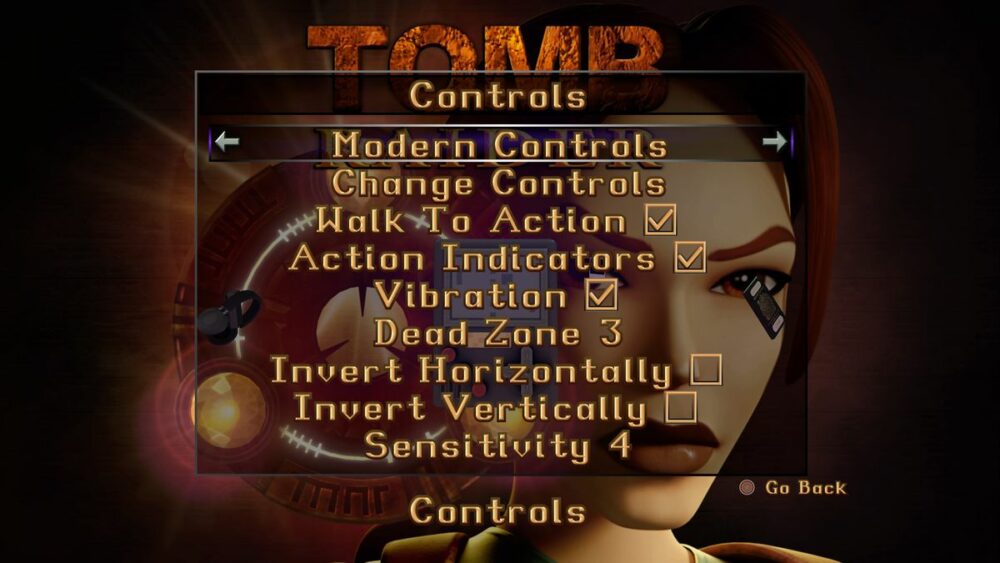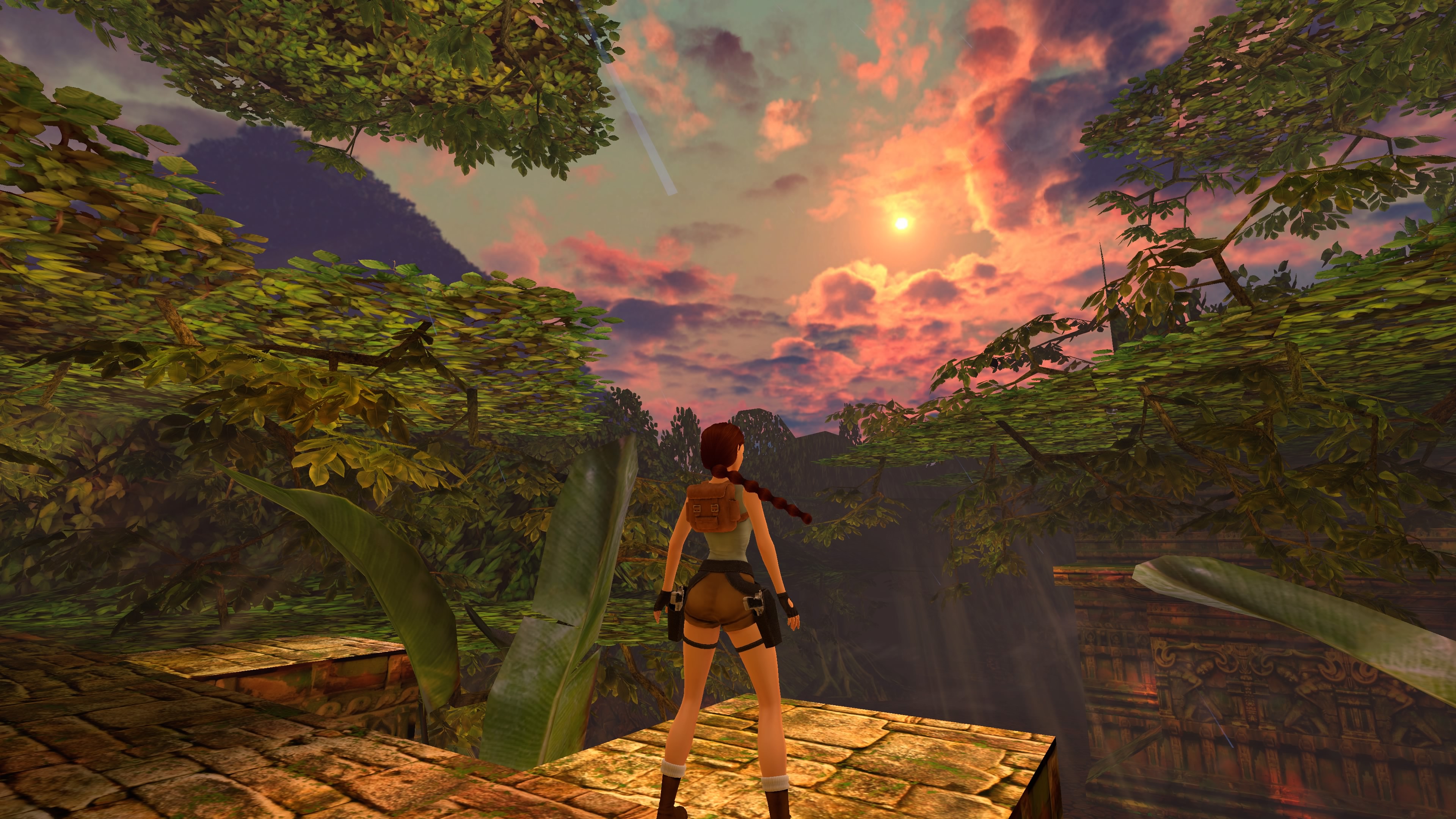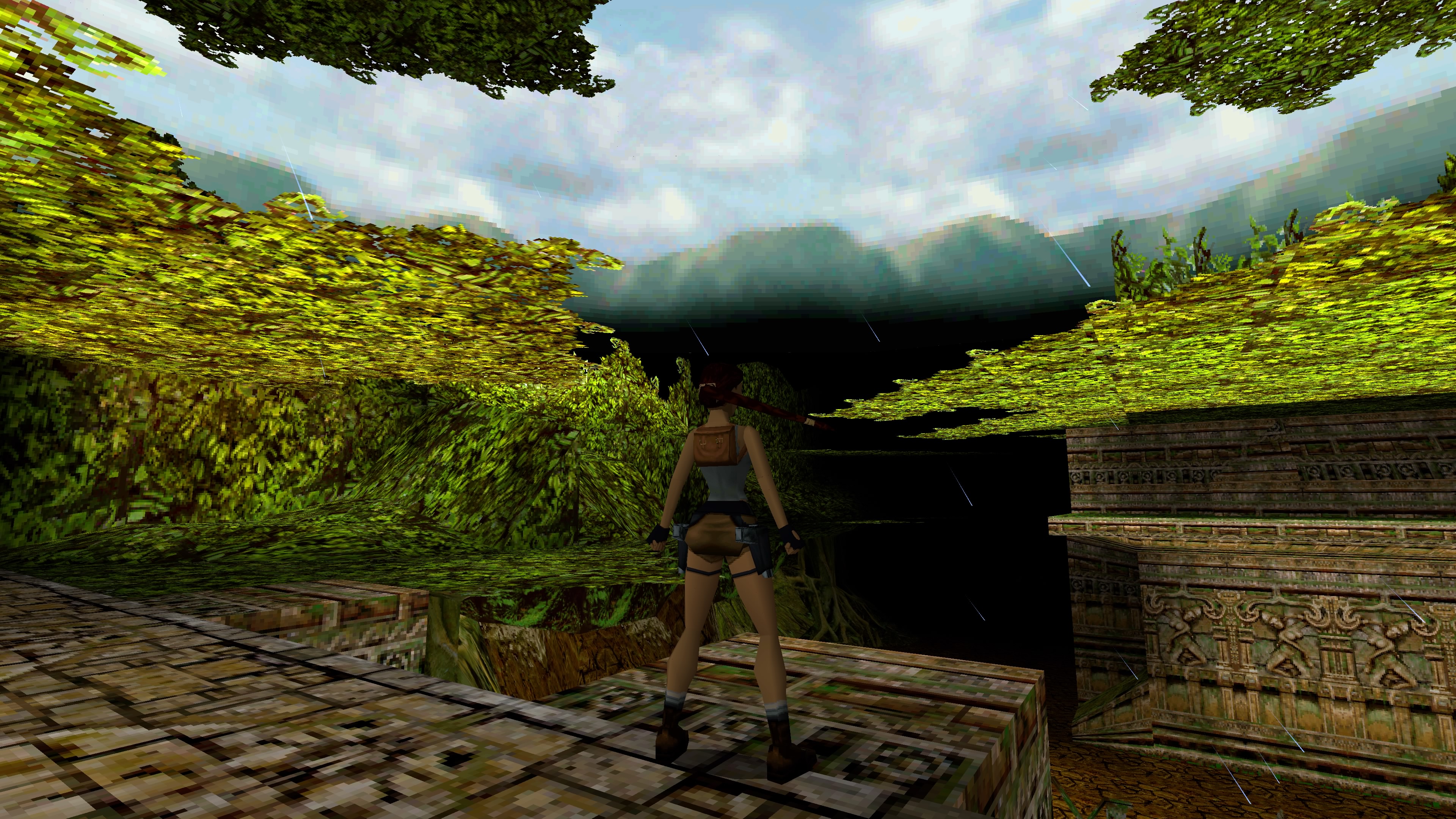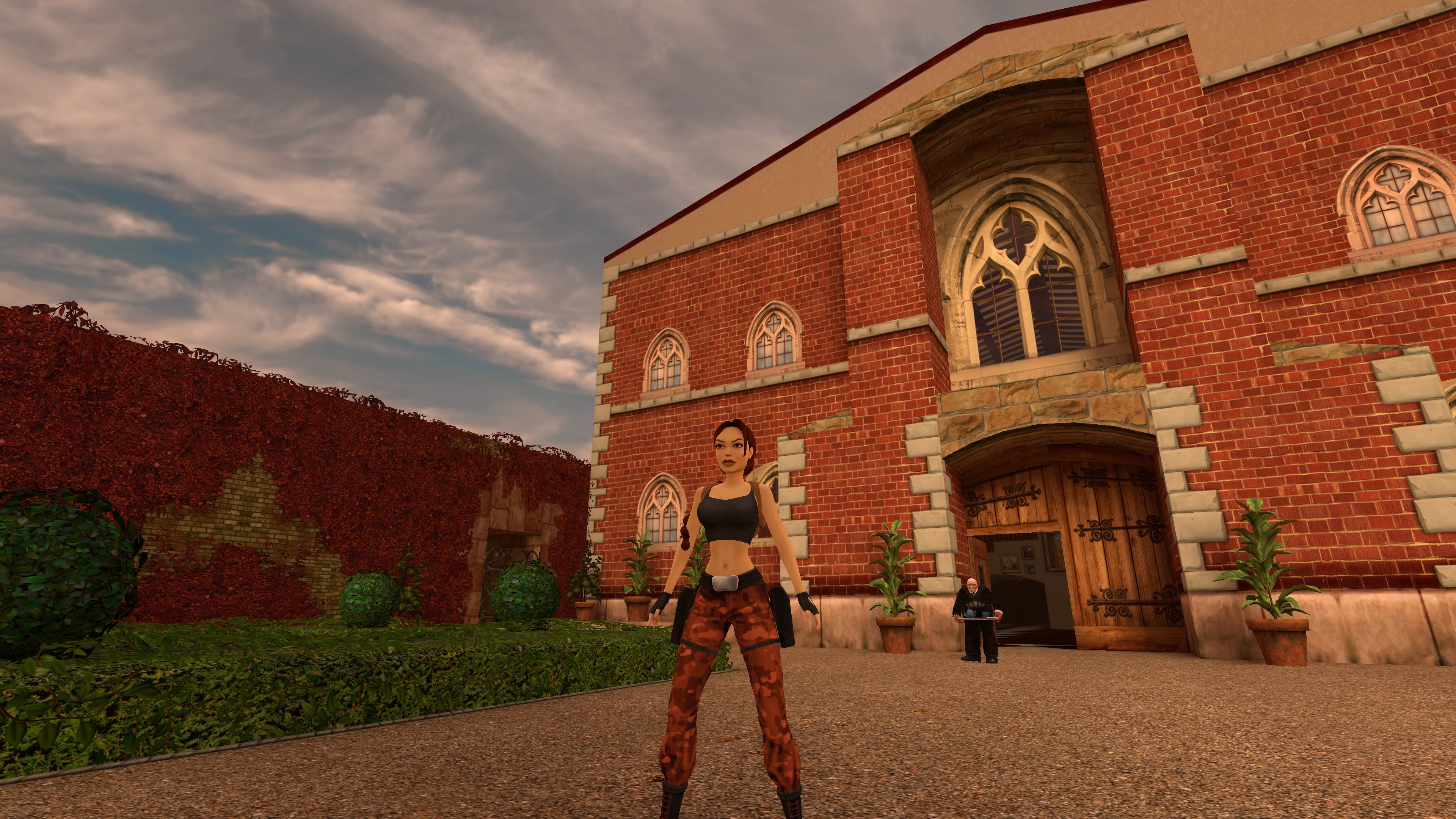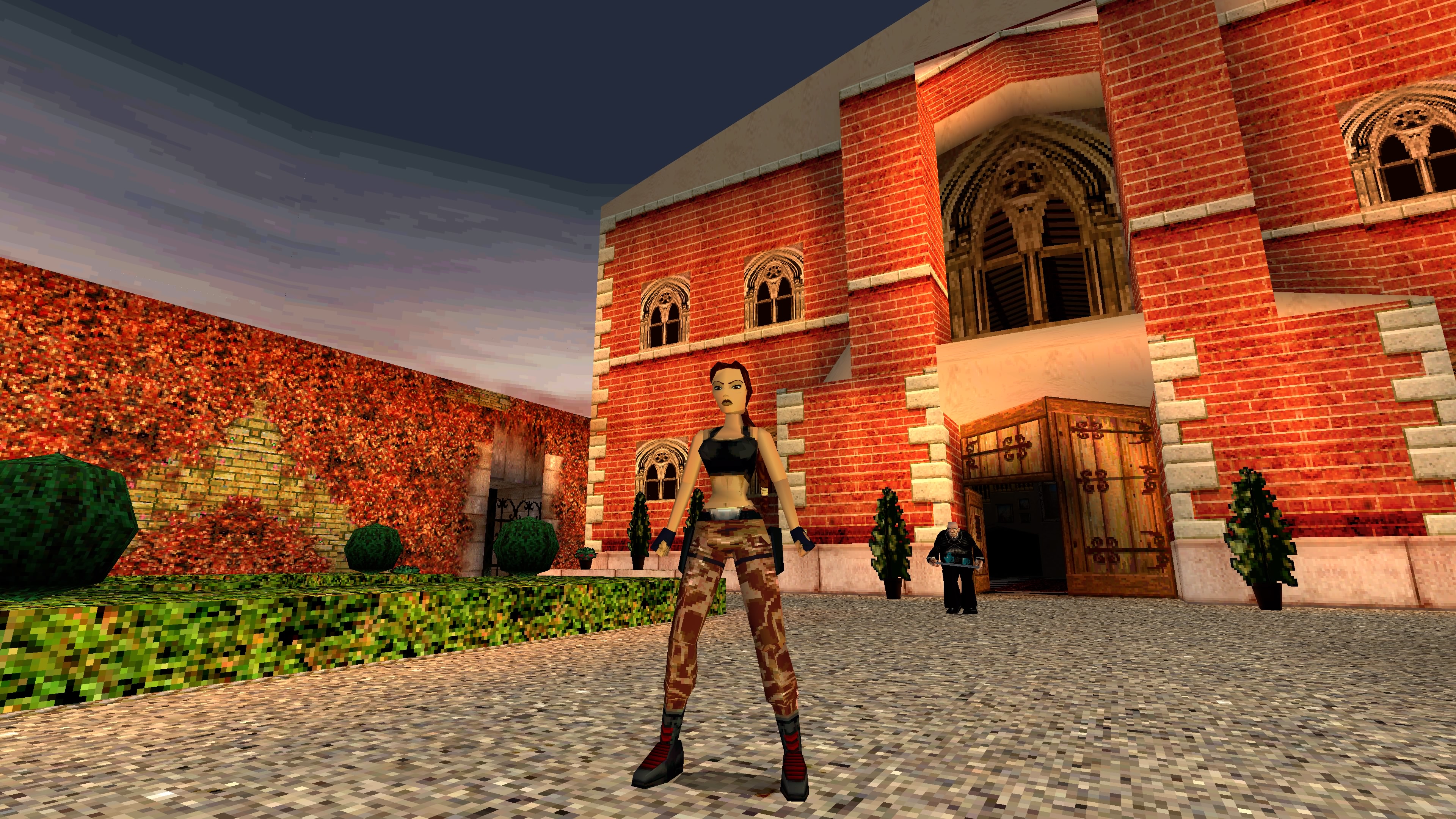Tomb Raider 1-3 Remastered starring Lara Croft is a collection of lovingly-restored artifacts that showcases why millions of people fell in love with Lara Croft. It’s also a revelation about the numerous ways games have improved and evolved over the past 25 years, and the impact of quality of life features we now take for granted.
Developers Aspyr and Crystal Dynamics have taken the first three Tomb Raider games, released between 1996 and 1998, and given them a fresh new coat of paint. Improvements include upscaled high-definition textures, new lighting effects, and upgraded character models. Lara herself looks more lifelike and expressive, with her new model striking a balance between her original in-game appearance and the pre-rendered version that appears on the games’ box art and advertisements. Gameplay-wise, little has changed; Lara still moves and shoots like she did in the late ’90s and the games’ original maps are angular and blocky.
But there are many modern concessions in Tomb Raider 1-3 Remastered. Players can choose from the vintage tank-style controls, which were well suited to Tomb Raider’s level designs, but now feel incredibly clunky, or brand-new “modern” 3D controls. The modernized controls work quite well, and make handling Lara and overcoming some previously-difficult platforming segments quite easy. Better still, the remastered collection lets you adjust the modernized controls to your liking, with sensitivity, dead zone adjustments, and remappable buttons.
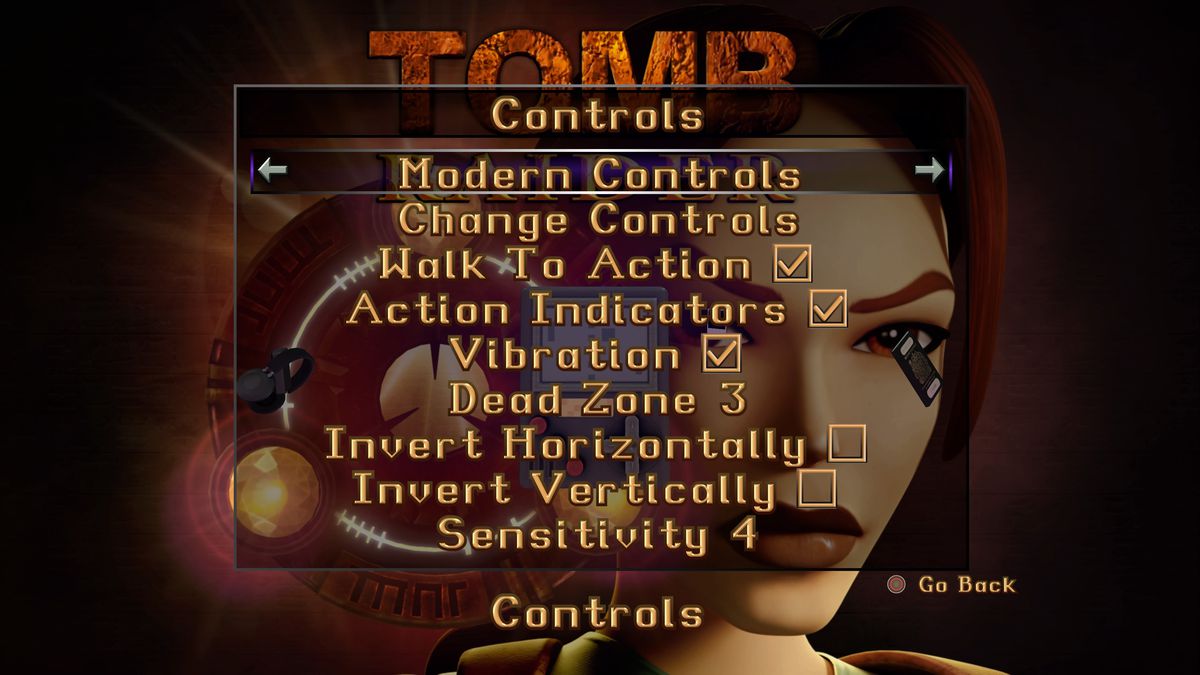
Image: Aspyr/Crystal Dynamics via Polygon
Tomb Raider 1-3 Remastered is still stuck with some of the original games’ problematic camera issues. When you’re walking near walls, navigating corners, or swimming, the camera can spin in wild directions. I’ve become disoriented a handful of times while playing through the first and third games, but keep reminding myself that this is an authentic experience whenever I accidentally run Lara off a ledge to her death.
Visually, the game is a treat. While levels are still constructed with sharp angles and perfect cubes, Aspyr and Crystal Dynamics have dressed up the games with pleasing visual effects, like snow, running waterfalls, and organic-looking vegetation. Levels have been updated slightly, and typically only where it makes sense; as players raid underground caves, they can sometimes look up and see openings in ceilings that offer views of cloudy skies and let natural light flood in.
At any point in Tomb Raider 1-3 Remastered — even during cutscenes and in menus — players can switch to the games’ original graphics. That classic presentation exposes the original blocky, low-res textures and pixelated CGI videos that players enjoyed in the late ’90s. It’s something of a shock to go back to those ancient-looking graphics, but also strangely affecting. With a single button press, you can quickly appreciate the visual care that Aspyr and Crystal Dynamics have applied in Remastered, which goes just far enough to make these old games feel fresh again.
Some things haven’t aged as well, however, and the opening moments of Tomb Raider 1-3 Remastered remind players that these games were made during a different time. Yes, Lara is a privileged British explorer plundering ancient artifacts and murdering plenty of wildlife along the way. But it’s the racist depictions of characters, particularly in Tomb Raider 3, that are far less fun to revisit. Remastered prepares you for the portrayal of South Pacific islanders in the third game, which are presented as cannibalistic primitive warriors, with the following content warning:
The games in this collection contain offensive depictions of people and cultures rooted in racial and ethnic prejudices. These stereotypes are deeply harmful, inexcusable, and do not align with our values at Crystal Dynamics.
Rather than removing this content, we have chosen to present it here in its original form, unaltered, in the hopes that we may acknowledge its harmful impact and learn from it.
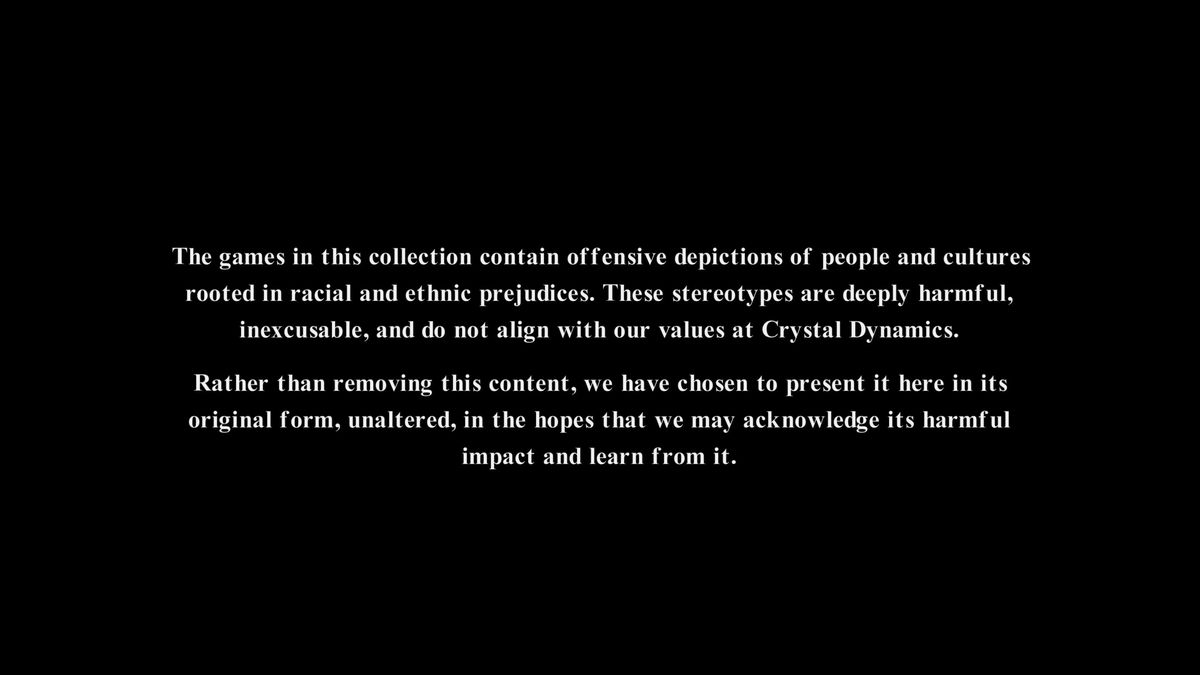
Image: Aspyr/Crystal Dynamics via Polygon
Aspyr and Crystal Dynamics’ choice to keep that racially and ethnically insensitive segment of the game shows that the developer has approached the Remastered collection smartly. Rather than dodge this outdated thinking of Core Design’s original, the collection keeps a record of it. It serves as just one of many reminders of how games have progressed in recent decades.
Newcomers to the Tomb Raider games who haven’t experienced the original trilogy will feel that progression the most. The first three Tomb Raider games do very little hand-holding or tutorializing. The games drop you right into the action, without a map or breadcrumb trail, sometimes in a fight for your life against tigers and pits filled with spikes. They’re challenging, sometimes unforgiving games.
But there’s a great meditative quality to these early games. They encourage you to explore, to find secrets and hidden exits at your own pace, with your own eyes. The first Tomb Raider in particular is full of quiet moments, where all you hear is the sound of Lara herself running, straining to scale walls, and jumping from ledge to precarious ledge. Music only kicks in during the games’ more action-oriented moments — which unfortunately often consist of Lara clumsily unloading round after round into wolves, bats, and giant spiders.
With the exception of Tomb Raider’s famous dinosaur encounters, these action moments are not the high points of the early games. It’s the adventure, the discovery, and Lara’s enjoyable acrobatics through these well-designed but archaic play spaces where Tomb Raider shines.
Tomb Raider 1-3 Remastered’s developers keenly understand that, making the original trilogy accessible to a modern audience without excessive fiddling. New additions like a fun photo mode and add-on expansions for the trilogy only enhance this classic experience. There’s still a lot to love in these old games, which are worth returning to until Lara Croft comes out of hiding for her next grand adventure.
Tomb Raider 1-3 Remastered starring Lara Croft will released on Feb. 14 for Nintendo Switch, PlayStation 4, PlayStation 5, Windows PC, Xbox One, and Xbox Series X. The game was played on PS5 using a pre-release download code provided by Aspyr. Vox Media has affiliate partnerships. These do not influence editorial content, though Vox Media may earn commissions for products purchased via affiliate links. You can find additional information about Polygon’s ethics policy here.
- SEO Powered Content & PR Distribution. Get Amplified Today.
- PlatoData.Network Vertical Generative Ai. Empower Yourself. Access Here.
- PlatoAiStream. Web3 Intelligence. Knowledge Amplified. Access Here.
- PlatoESG. Carbon, CleanTech, Energy, Environment, Solar, Waste Management. Access Here.
- PlatoHealth. Biotech and Clinical Trials Intelligence. Access Here.
- Source: https://www.polygon.com/24072218/tomb-raider-1-3-remastered-collection-review
- 1
- 14
- 15
- 1996
- 1998
- 210
- 212
- 220
- 25
- 28
- 3d
- 7
- 8
- 9
- a
- About
- accessible
- Action
- Add-on
- additions
- adjustments
- Adventure
- affecting
- Affiliate
- after
- again
- Against
- aged
- align
- All
- along
- also
- an
- ancient
- and
- any
- appears
- applied
- appreciate
- ARE
- Art
- as
- Aspyr
- At
- audience
- Authentic
- back
- balance
- bats
- become
- been
- BEST
- Better
- between
- Box
- British
- but
- button
- by
- camera
- CAN
- Canopy
- care
- CGI
- challenging
- changed
- character
- characters
- choice
- choose
- chosen
- Classic
- code
- collection
- comes
- commissions
- concessions
- constructed
- contain
- content
- Control
- controls
- Core
- corners
- Crystal
- Crystal Dynamics
- cultures
- dead
- death
- decades
- deeply
- designs
- Developer
- developers
- DID
- different
- Dinosaur
- directions
- discovery
- do
- Dodge
- download
- Drop
- During
- dynamics
- Early
- Earn
- easy
- Editorial
- effects
- encourage
- enhance
- enjoyable
- enjoyed
- enough
- ethics
- even
- evolved
- exception
- excessive
- experience
- experienced
- explore
- explorer
- eyes
- false
- famous
- far
- Features
- Feb
- feel
- fight
- filled
- find
- First
- flood
- Following
- For
- form
- fresh
- from
- front
- full
- fun
- game
- Games
- Gaming
- giant
- given
- go
- goes
- grand
- granted
- graphics
- great
- Handling
- harmful
- has
- Have
- hear
- her
- here
- hidden
- hiding
- High
- hopes
- How
- however
- http
- HTTPS
- i
- image
- Impact
- important
- Improved
- improvements
- in
- in-game
- include
- incredibly
- influence
- information
- into
- Is
- Islanders
- issues
- IT
- ITS
- jpg
- just
- keep
- lara croft
- late
- LEARN
- less
- let
- Level
- levels
- Life
- lifelike
- light
- Lighting
- like
- links
- Little
- Look
- looks
- lot
- love
- lush
- made
- make
- MAKES
- Making
- mansion
- many
- map
- Maps
- May
- Media
- Millions
- mode
- model
- models
- Modern
- moments
- more
- most
- moves
- Music
- myself
- Natural
- Navigating
- Near
- New
- Newsletter
- Next
- Nintendo
- Nintendo Switch
- not
- notes
- now
- numerous
- of
- off
- offensive
- offer
- often
- Old
- on
- One
- only
- opening
- Options
- or
- original
- our
- out
- outdated
- over
- overcoming
- own
- pace
- Pacific
- paint
- particular
- particularly
- partnerships
- Past
- Patch
- patch notes
- PC
- People
- perfect
- photo
- plato
- plato data intelligence
- platodata
- platogaming
- play
- played
- players
- Playing
- playstation
- playstation 4
- playstation 5
- Plenty
- Point
- Points
- policy
- Polygon
- prejudices
- present
- presentation
- presented
- press
- primitive
- privileged
- Products
- progression
- provided
- ps5
- purchased
- quality
- Quality of Life
- quickly
- quite
- racist
- raid
- rather
- recent
- record
- released
- remastered
- reminding
- removing
- rendered
- restores
- returning
- revelation
- right
- rooted
- round
- roundup
- Run
- running
- Scale
- secrets
- see
- segment
- segments
- sense
- Series
- serves
- she
- shines
- showing
- shows
- sign
- single
- skies
- snow
- some
- something
- sometimes
- sound
- South
- spaces
- spikes
- Spin
- standing
- still
- swimming
- Switch
- Take
- taken
- than
- that
- The
- The Game
- Them
- there
- These
- they
- things
- Thinking
- third
- this
- those
- though
- three
- Through
- tigers
- time
- times
- to
- Tomb Raider
- trail
- treat
- trio
- typically
- unaltered
- underground
- Understand
- unfortunately
- until
- up
- updated
- upgraded
- using
- values
- vegetation
- version
- very
- via
- Videos
- views
- vintage
- visual
- W3
- walking
- warning
- warriors
- was
- waterfalls
- way
- ways
- we
- weekly
- well
- were
- when
- whenever
- where
- while
- WHO
- why
- wild
- Wildlife
- will
- windows
- Windows PC
- with
- without
- wolves
- Work
- worth
- X
- xbox
- Xbox One
- xbox series
- Xbox Series X
- XML
- years
- yes
- you
- your
- zephyrnet
- zone
